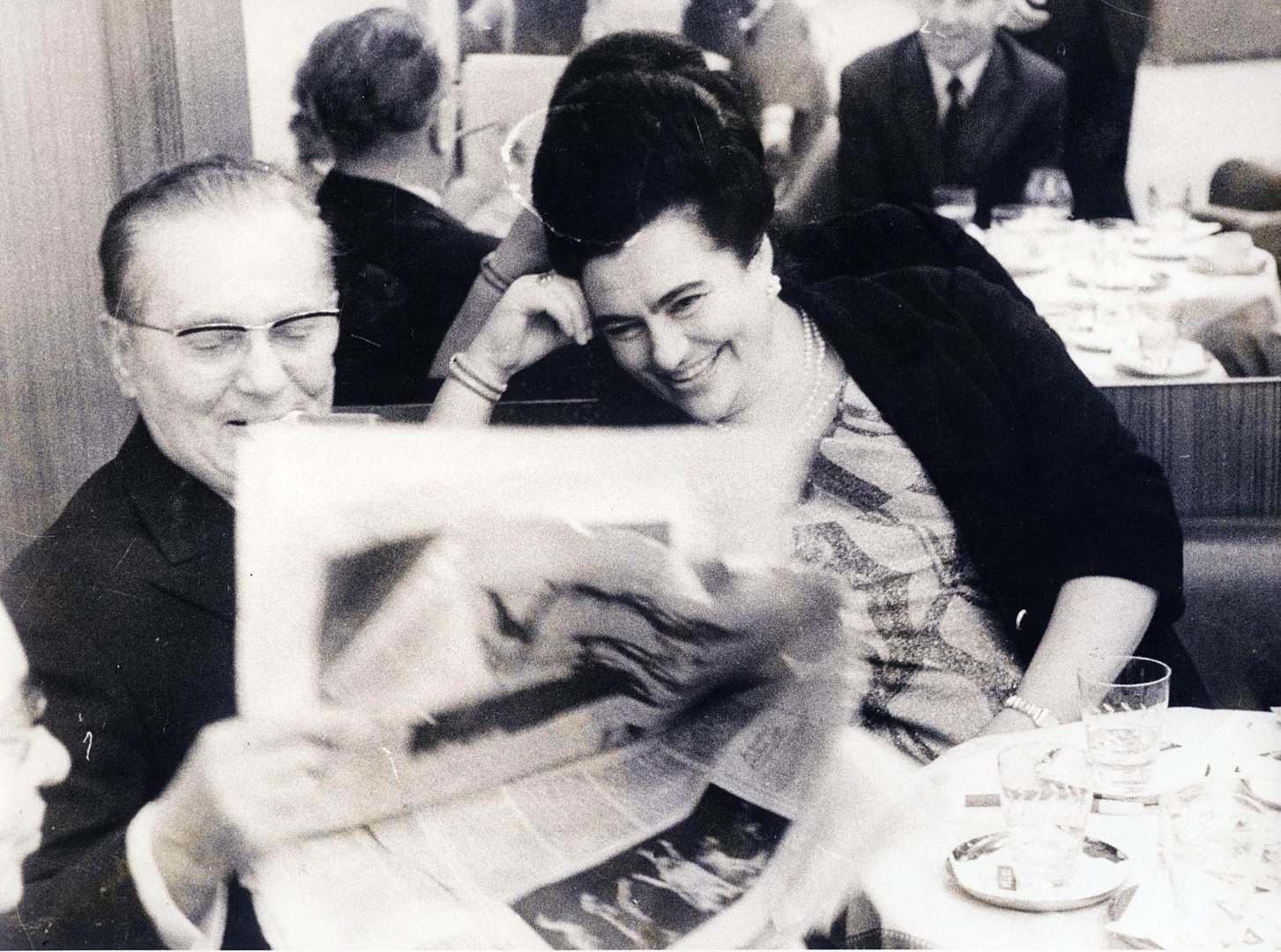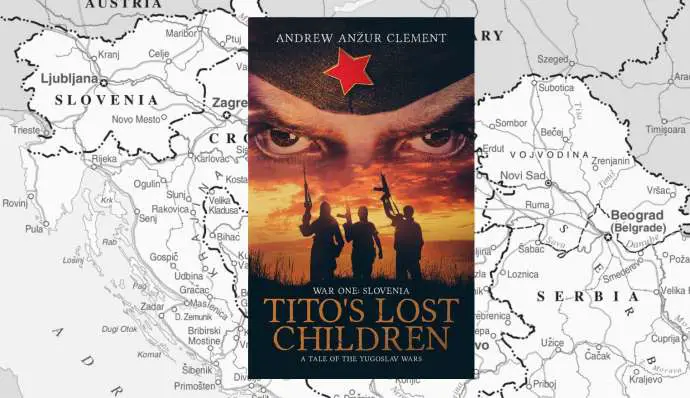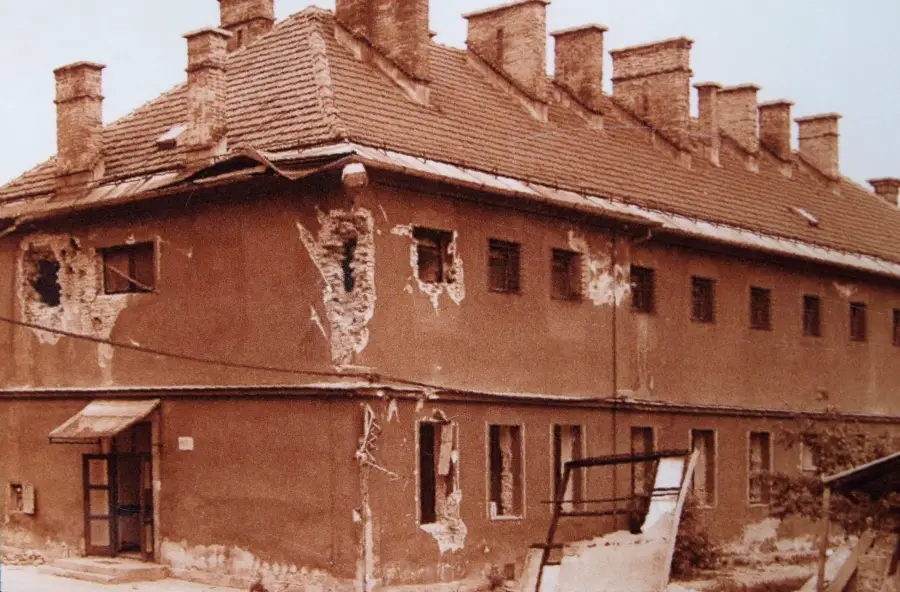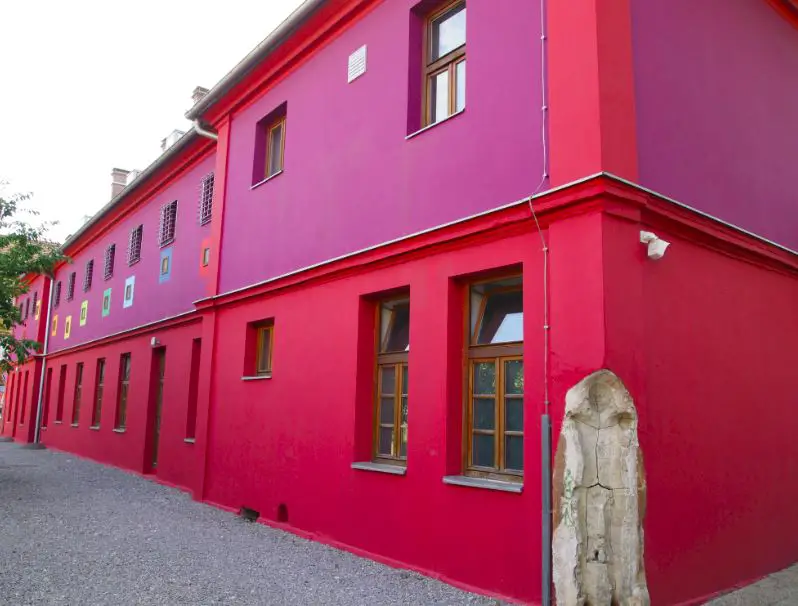As an author living in Ljubljana, much of my work is inspired by Slovenia and the region. Most recently I was inspired to write an alternate history of the breakup of Yugoslavia, which asks the question: What if Marshal Tito had named a totally untrained and untested successor? The first book centers on Slovenia and its war of independence. Here are ten interesting things that I learned, or discovered more about, while doing research for Tito’s Lost Children: War One Slovenia.
1. If you live in Ljubljana, Marshal Josip Broz Tito died in the hospital you probably go to.
Josip Broz Tito died at the University Clinical Center in Ljubljana on Njegoševa cesta. In 1980 it was one of the newest and most advanced medical centers in Yugoslavia, so he chose to travel to Ljubljana for treatment. The procession that took his body back to Belgrade on his famous Blue Train started from the Slovenian Parliament and what is today called Republic Square. A bit over ten years later this was the same location where Slovenian independence was declared.
Related: May 4 in Slovenian History: Tito Dies in Ljubljana
In the Tito’s Lost Children trilogy, eleven years after his death, Tito’s fictional successor is tasked with stopping the breakup of Yugoslavia, avoiding capture by Serbian nationalists and preventing a wider war and ethnic cleansing in the Balkans.
2. The rest of the former Yugoslavia has stereotypes that Slovenes are cheap, that Slovene girls are ‘easy,’ and that Slovene men are wimpy.
In the rest of the former Yugoslavia, ‘going Dutch’ is apparently referred to as ‘being Slovene.’ Despite – or possibly because of --the fact that Slovenia was the wealthiest member republic of the former Yugoslavia, Slovenes have a reputation as the misers of the region. In my experience the Slovenian attitude toward money seems to be more of an overt concern with good accounting. Be sure you keep the receipt for that one piece of burek you just bought!
There is also a stereotype that Slovene girls are ‘easy’, possibly because most interactions between Slovenes and people from other Yugoslav nationalities took place on ‘spring break’ style vacations in Croatia. As a single guy living here, I must report that I don’t have much evidence that this stereotype is true.
Perhaps related to the above, there is also a perception in the Balkans that Slovene men are wimpy. However, Slovenes are quick to point out that this is not the case and that brash behavior is simply frowned upon more here than it is in the rest of the former Yugoslavia.
In Tito’s Lost Children, the main characters meet Slovenes who seem to fulfill these stereotypes, only to turn out to be slightly misunderstood once we actually get to know them.
3. Slovenia declared independence one day before they announced that they would.
88.5% of Slovenians voted for independence in a referendum held on December 23rd 1991, which gave the government six months to implement the decision. The government took almost the entire six months to prepare for the independence and a probable conflict with the Yugoslav People’s Army. However, independence was declared one day early, before the waiting period expired, in order to catch the People’s Army off guard. This surprise move possibly made Slovenian victory easier. It also plays a role in Tito’s Lost Children.
4. Slovenska Cesta used to be named Tito Street.
It seems almost obvious once you know that ‘Tito Street,’ one of the main roads in the center of Ljubljana, was renamed ‘Slovenian Street’ upon independence. The names also changed for a lot of other landmark places in the center of the city. These include: Revolution Square, present day Republic Square, and Liberation Square, which is today’s Congress Square.

Tito and Jovanka reading Delo in Hotel Slon, on Tito Street, in 1969. Wikimedia
5. The present day prison hostel in Metelkova was where Janez Janša, an activist in the 1980’s, was imprisoned.
One of Ljubljana’s alternative culture hubs, now known as Metelkova for the street that it fronts on, has a prison that has been converted into a hostel. During the late 1980’s Metelkova was a barracks for the Yugoslav People’s Army, which got abandoned after the Slovenian war of independence. The prison hostel in it was once a very real military jail where politician Janez Janša was imprisoned after leaking classified People’s Army documents to Mladina, a magazine that, at the time, was officially the communist party’s youth magazine. I describe Metelkova as a functioning barracks toward the end of Tito’s Lost Children Book One and in the beginning of Book Two: Croatia.
The prison in Metelkova before the area became a squat. Source: Hostel Celica. Below, the place now. Source: JL Flanner
6. Technically speaking, Slovenia declared war on Yugoslavia, not the other way around.
When you hear about the Ten-Day-War, it often sounds as if the scrappy Slovene defense forces went up against the overwhelmingly superior aggressor of the Yugoslav People’s Army and won. This is true; a People’s Army soldier fired the first actual shots in the war. However, the order to retaliate, should the People’s Army resist Slovenia’s independence, was given before those shots were fired. This means that, technically, Slovenia did not only win the war, it was the first to declare the war in the first place.
7. No one can agree on who gave the order for the Slovene Territorial Defense forces to engage the Yugoslav People’s Army.
To this day, both then-President Milan Kučan and Janez Janša, who was defense minister at the time, claim to have been the one to give the order for the Slovenian forces to fire at the People’s Army. This means no one really knows who gave the actual order to start the war. Spoiler Alert: in Tito’s Lost Children, this is because my main character gives the order and both Kučan and Janša have to cover up her existence!
8. After World War Two a large group of fighters was killed or forced into exile.
Walking around Ljubljana, you will doubtless notice the large number of plaques dedicated to the partisan fighters who fell fighting the fascists during the Second World War. However, there was also another group of soldiers that didn’t get plaques -- to put it mildly.
The Domobranci (Home Defenders) were composed of people who did not support the partisans and the Italians allowed them to band together to defend their homes. Eventually, the Nazis forced them into fighting on their side. Nevertheless, they were branded as traitors after the partisans’ victory and were either forced to flee, sent to ‘reeducation’ camps or shot in mass killing fields. Knowledge of this was largely suppressed during the Yugoslav times. Nowadays, when you hear Slovenes speak of the ‘complicated World War Two history,’ this is what they are talking about.
One of my characters in Tito’s Lost Children is a descendant of a Domobranec. She has to deal with the political fallout of this history and was inspired by one of my real ancestors, who I discovered while doing research for the books could possibly have been a Domobranci sympathizer.
9. There was a whole class of people who had their rights as citizens erased when Slovenia became independent.
After Slovenia declared independence in 1991 it erased many non-Slovene Yugoslav nationals living in Slovenia from its list of citizens. This functionally made them non-persons in Slovene society. The issue has not been addressed until relatively recently. Milan Aksentijević, one of the senior officers of the Yugoslav People’s Army in Slovenia, had this happen to him, even though he had lived in Slovenia for years and was married to a Slovene. Something similar happens to a fictional general in my books.
10. Mt. Triglav looks absolutely nothing like it does on the flag.
The climax of Tito’s Lost Children Book One takes place on the summit of Mount Triglav. While doing research for the books I ran across a number of pictures of the mountain and was quite hard pressed to find where the three peaks were. I guess they go in kind of a curve?
At one point, I resolved to finally climb Triglav as research for the books. My mountaineer friend just laughed and suggested that a ‘city rat’ like me should start with Šmarna Gora, a hill on the outskirts of Ljubljana, instead. I had to settle for watching YouTube videos about climbing Slovenia’s highest peak.
Tito’s Lost Children War One: Slovenia is available here.







